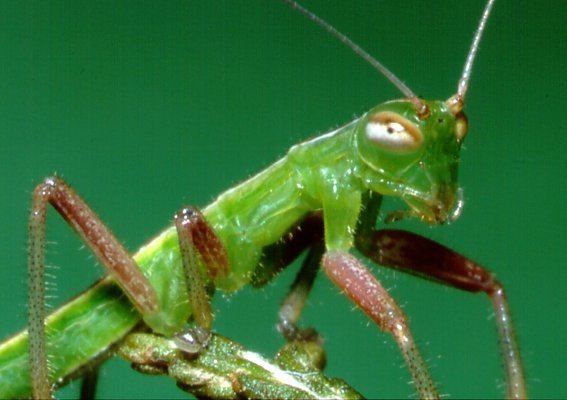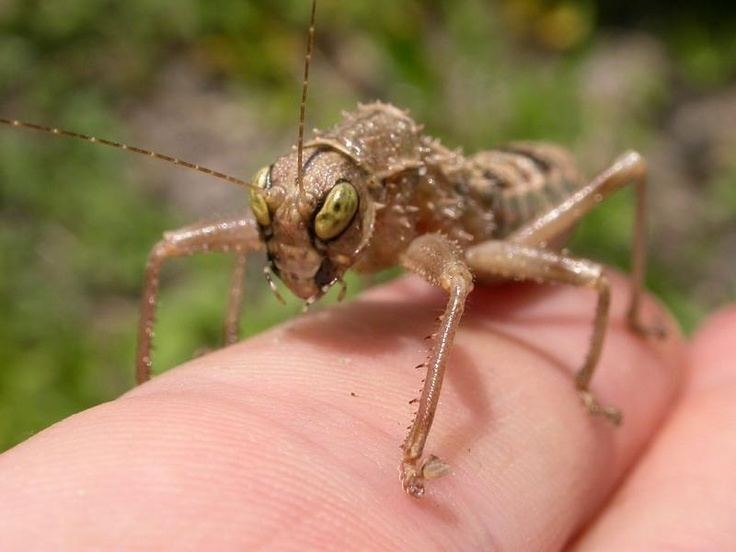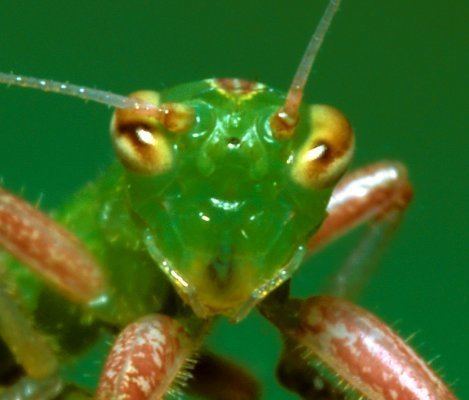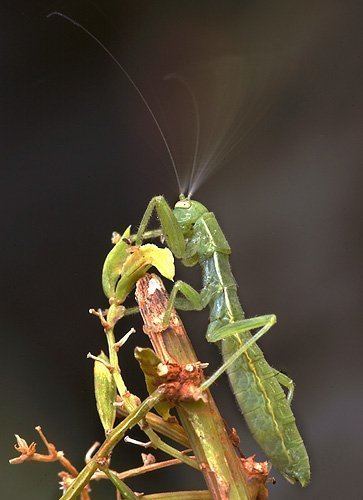Superorder Exopterygota Scientific name Mantophasmatodea Subclass Pterygota | Infraclass Neoptera Suborder Mantophasmatodea Rank Family | |
 | ||
Order NotopteraArillo & Engel, 2006 Similar Insect, Grylloblattodea, Zoraptera, Embioptera, Notoptera | ||
Mantophasmatidae is a family of carnivorous insects within the order Notoptera, which was discovered in Africa in 2001. Originally, the group was regarded as an order in its own right, and named Mantophasmatodea, but based on recent evidence indicating a sister group relationship with Grylloblattidae (formerly classified in the order Grylloblattodea), Arillo & Engel have combined the two groups into a single order, Notoptera.
Contents

Overview

The most common vernacular name for this order is gladiators, although they also are called rock crawlers, heelwalkers, mantophasmids, and colloquially, mantos. Their modern centre of endemism is western South Africa and Namibia (Brandberg Massif), although a relict population, and Eocene fossils suggest a wider ancient distribution.

Mantophasmatodea are wingless even as adults, making them relatively difficult to identify. They resemble a mix between praying mantids and phasmids, and molecular evidence indicates that they are most closely related to the equally enigmatic group Grylloblattodea. Initially, the gladiators were described from old museum specimens that originally were found in Namibia (Mantophasma zephyrum) and Tanzania (M. subsolanum), and from a 45-million-year-old specimen of Baltic amber (Raptophasma kerneggeri).
Live specimens were found in Namibia by an international expedition in early 2002; Tyrannophasma gladiator was found on the Brandberg Massif, and Mantophasma zephyrum was found on the Erongoberg Massif.
Classification
The most recent classification recognizes numerous genera, including fossils:
Some taxonomists assign full family status to the subfamilies and tribes, and sub-ordinal status to the family.
